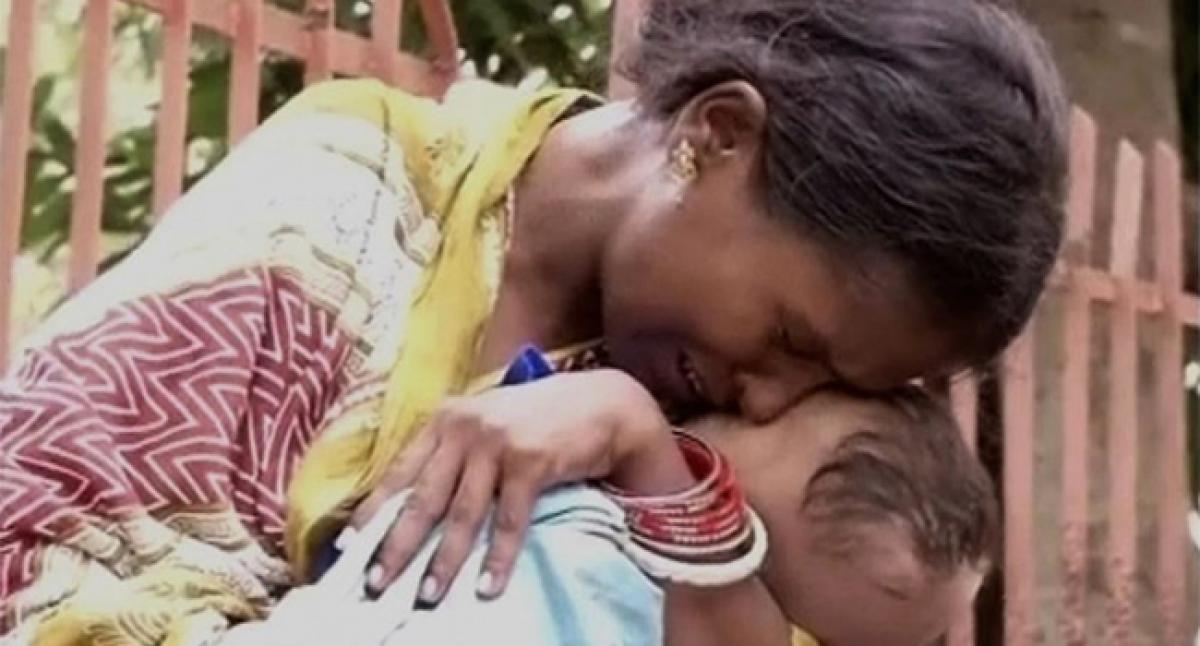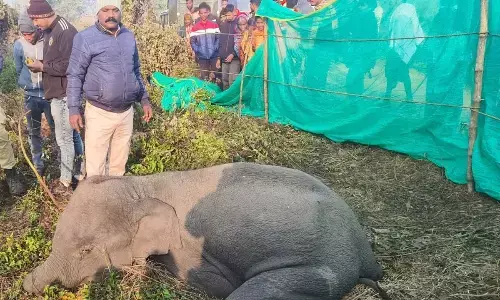Protecting newborns a major concern now

Globally, every year 26 lakh children die within one month of birth and about 26 lakh children are still-born, and out of these 26 lakh infant deaths, 10 lakh die on the first day of birth and 10 lakh children die within six days of their birth, according to the United Nations Children’s Fund (UNICEF) latest report on infant mortality rate.
Globally, every year 26 lakh children die within one month of birth and about 26 lakh children are still-born, and out of these 26 lakh infant deaths, 10 lakh die on the first day of birth and 10 lakh children die within six days of their birth, according to the United Nations Children’s Fund (UNICEF) latest report on infant mortality rate.
Globally, Japan was said to be the safest country for infants, where newborn mortality rate is less than one (0.9 per cent) per 1,000 newborns, while Pakistan is the most unsafe country, where one in every 22 newborns die before completing 28 days. Lack of institutional health infrastructure has led to India being ranked as the 12th worst country for newborns.
In India, the newborn infant mortality rate is 25.4/1000 births. Out of the total infant mortality rate globally, 24 per cent deaths are reported in India alone. According to the sample registration system (SRS) bulletin of the Registrar General of India, there has been an eight per cent decline in the newborn mortality rate and 90,000 fewer infants died in 2016 compared to 2015. This decrease was mostly recorded in Bihar, Assam, Madhya Pradesh, Uttar Pradesh, Jharkhand, Chhattisgarh, Odisha and Rajasthan.
In the case of infant mortality, several inequalities are being observed in India. In Kerala and Goa, the rate is 10/1000; and in Bihar and Uttarakhand, it is 44/1000. The deaths of newborn children are also higher in the States where the birth rate is high. Around 46 per cent of the total children born in the country are born in Madhya Pradesh, Rajasthan, Uttar Pradesh and Bihar and 57 per cent of the total number of new born infant mortality is from these States.
Delay and complex deliveries, infections such as pneumonia, sepsis and diarrhoea, congenital abnormalities are major causes of the death of the newborns. According to the Sample Registration System (SRS) of the Registrar General of India, 35.9 per cent of the total infant deaths in India are of babies born before time and the weight of children is lower at birth, 16.9 per cent pneumonia, 9.9 per cent Asphyxia and birth trauma, 7.9 per cent. Other non-communicable diseases, 6.7 per cent of diarrheal diseases and 4.6 per cent are due to birth defects and 4.2 per cent due to infections.
However, there is a huge lack of institutional health infrastructure and facilities. The condition of health services in villages has deteriorated. According to the National Family Health Survey (NFHS-IV), only 21 per cent of women are availing pre-delivery services. When the child is growing in the womb, the inability to detect any problems causes a large number of new born deaths.
Children have the highest risk of infections like pneumonia, blood infection and diarrhoea. According to the WHO statistics, diarrhoea is the second largest cause of death among Indian children. The report suggested that India should give more attention to pneumonia and diarrhoea, so that lives of 90,000 children under five years of age can be saved every year.
Apart from this, not having proper eating habits during adolescence, child marriage, getting pregnant before the full development of the body, not getting rest during pregnancy and subsequent hard work, mental/emotional problems, social beliefs about pregnancy, pollution, violence etc., are also causes contributing to the death of newborns.
More than 100 million children have been saved since 1990 due to immunisation and improved newborn care, and if efforts are further intensified, mortality rate in India can be 11 by 2030. Eighty per cent of newborn children die due to premature birth and complex infections such as pneumonia and sepsis. Availability of quality health facilities, trained doctors, nurses, cleanliness, proper pre and post natal care etc., can prevent these deaths from taking place, says the report.
According to this report, newborns and infant mortality rates are declining year after year and India is making further efforts to reduce it. Newborn mortality rate of 25.4 per 1000 live births in 2015 is 37 per cent less than what it was in the year 2000. But in spite of these efforts, India cannot achieve the required newborn mortality rate of 12/1000 live births by 2030, and cannot even meet this target by 2050.
In India, the government has created robust awareness through television, radio and newspapers about the various schemes implemented to reduce infant mortality like Navjaat Shishu Yojana, Baal aur Kishoravastha Swasthya Yojana, Pradhan Mantri Matritva Vandana Yojana. Special Neonatal Treatment and Nutrition Rehabilitation centres are also being opened across the country.
To achieve the SDG-3 target of newborn infant mortality, there is a need to provide more allocations in the budget for health services and a mass awareness campaign needs to be run at the grassroots level, in which volunteers, organizations, media; social workers and students can help. Every citizen has been given the right to life in the Indian Constitution. This right is not available to the newborn children due to which a large number of newborns are dying. There is a need to make serious socio-economic-political efforts to reduce infant mortality.















